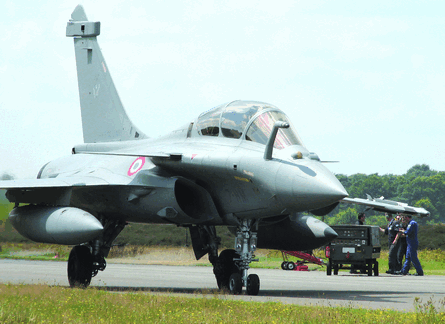French industry is pinning its hopes for reviving the flagging export fortunes of the Dassault Rafale fighter on the entry into production this month of Europe's first active electronically scanned array radar.
"This capability has ended its development phase and is now entering into the production phase," says Thales Airborne Systems chief executive Pierre-Yves Chaltiel.
Thales will start delivering AESA RBE-2 radars to the French air force from 2010 under a €200 million ($256 million) contract covering final development and the initial production of up to four units. Chaltiel expects the French defence ministry to award a full series production contract worth "several hundreds of millions of euros" for the RBE-2 in 2009, to equip the French military's fourth tranche of Rafales, expected to number around 60 aircraft.
 |
|---|
© JMJMC. Oversteyns Gallery/AirSpace |
In the export market, "Rafale was very difficult to sell perhaps five or 10 years ago", says Chaltiel. "But now it's fully available with what I think is a real differentiator towards all its competitors".
Swapping out the Rafale's passive electronically steered antenna and replacing it with the active antenna takes "less than one hour", says Chaltiel, although France is yet to commit to a retrofit of its existing Rafale fleet. The AESA radar face improves detection range by "about 40% compared with previous technologies of radar", says Chaltiel.
Meanwhile, the Rafale's ability to shoot down an enemy aircraft using only passive detection was demonstrated for the first time in October, says Chaltiel. Two aircraft flew "several miles apart", the first using electronic support measures to monitor the target and communicate its track via Link 16 datalink to the second Rafale.
The second aircraft also passively tracked the target using its infrared search and track system and was able to achieve a lock-on by sending "a few pulses" from its laser rangefinder. The enemy aircraft was then "shot down" using an MBDA "Mica-type" air-to-air missile with an active seeker that became effective at a range of around 18km (10nm), says Chaltiel.
"It is possible now to have a fully passive detection capability and shoot down enemy aircraft without transmitting a single emission from the aircraft," says Chaltiel.
Thales says that the integration of the RBE-2 positions the Rafale as the only fighter in its class to be equipped with active arrays for both its radar and electronic warfare suite.
Source: Flight International























